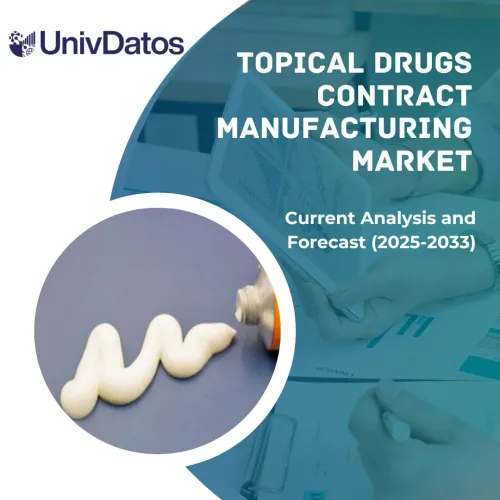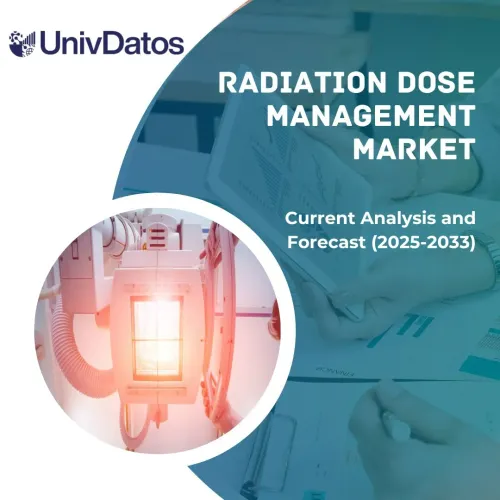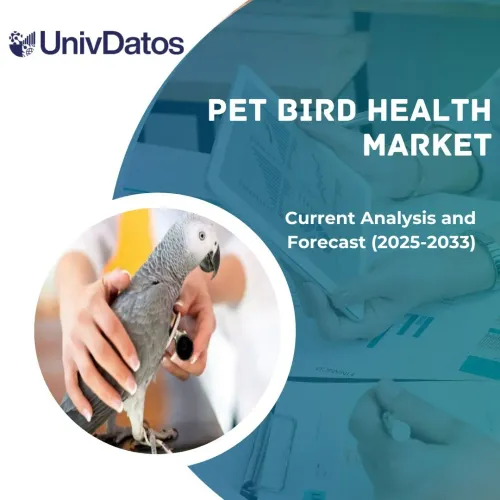- Home
- About Us
- Industry
- Services
- Reading
- Contact Us
Neuroscience Market: Current Analysis and Forecast (2022-2030)
Emphasis on Component (Instruments, Software, and Services); End-User (Hospitals, Diagnostic Laboratories, Research and Academic Institutes, and Others); and Region/Country
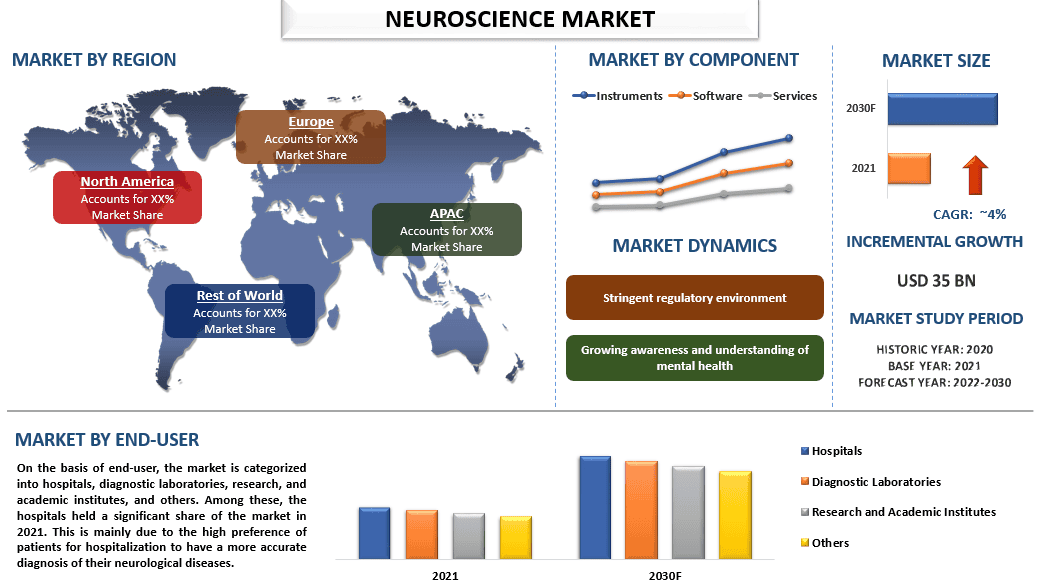
The neuroscience market is expected to grow at a strong CAGR of around 4% during the forecast period owing to the rising geriatric population and increasing investment in neuroscience research and development. Moreover, technological advancements in imaging systems and neuroinformatic tools, increasing R&D activities by pharmaceutical and biotech companies, and the growing adoption of neuroscience-based therapies. Furthermore, the increasing prevalence of diseases such as Alzheimer’s and Parkinson’s, along with the rising geriatric population, is expected to drive the demand for neuroscience products and services. For instance, according to a report from the Alzheimer’s Disease Association, in 2022, neurodegenerative diseases affect millions of people worldwide. In the United States, as many as 6.2 million people may have Alzheimer’s disease. Moreover, government initiatives to support neuroscience research and funding for the development of new treatments are also contributing to the growth of the market. Also, the rising demand for non-invasive and minimally invasive procedures and increasing awareness and acceptance of mental health issues are driving growth in the neuroscience market.
Some of the major players operating in the market include Carl ZEISS AG; Leica Microsystems; General Electric; Siemens; Koninklijke Philips N.V.; TOSHIBA CORPORATION; Hitachi, Ltd.; ESAOTE SPA; HAAG-STREIT GROUP; and Optofine Instruments Pvt. Ltd. Several M&As along with partnerships have been undertaken by these players to facilitate customers with hi-tech and innovative products/technologies.
Insights Presented in the Report
“Amongst component, the services held a dominating share of the market in 2021”
Based on component, the market is segmented into instruments, software, and services. Amongst these, the services category is expected to grow at the fastest rate of CAGR during the forecast period. Because of these services help organizations identify areas of opportunity and develop effective strategies for growth, ensuring that advanced neuroscience equipment and technology are properly installed and configured, optimizing their performance, and making sure that equipment and technology remain in good working order, minimizing downtime and ensuring the continuity of research and clinical operations.
“Amongst end-user, the diagnostic laboratories held the majority share of the market in 2021”
By end-user, the market is bifurcated into hospitals, diagnostic laboratories, research and academic institutes, and others. Among these, the diagnostic laboratories category is expected to grow at the fastest CAGR during the forecast period. Diagnostic laboratories play a crucial role in the neuroscience market as they offer advanced neurodiagnostic services to patients, including neuroimaging, genetic testing, and cognitive assessment. They provide clinicians with the tools needed to accurately diagnose and treat neurological disorders, contributing to better patient outcomes. Diagnostic laboratories also drive innovation in the field through the development of new diagnostic technologies and testing methods. These factors will drive the growth of this market.
“APAC is expected to witness significant growth”
The APAC region is expected to witness significant growth in the neuroscience market due to the increasing prevalence of neurological disorders and the growing geriatric population. For instance, according to a report published by the Chinese government’s National Health Commission in 2019, the prevalence of neurological disorders in China has been increasing rapidly in recent years. The report estimated that there were approximately 300 million people with neurological disorders in China, accounting for about 22% of the country’s total population. The rising healthcare expenditure and government initiatives to improve healthcare infrastructure are also contributing to the growth of the neuroscience market in the APAC region. Furthermore, the increasing focus of key players on expanding their presence in the region is driving market growth.
Neuroscience Market Report Coverage

Reasons to buy this report:
- The study includes market sizing and forecasting analysis validated by authenticated key industry experts.
- The report presents a quick review of overall industry performance at one glance.
- The report covers an in-depth analysis of prominent industry peers with a primary focus on key business financials, product portfolios, expansion strategies, and recent developments.
- Detailed examination of drivers, restraints, key trends, and opportunities prevailing in the industry.
- The study comprehensively covers the market across different segments.
- Deep dive regional level analysis of the industry.
Customization Options:
The global neuroscience market can further be customized as per the requirement or any other market segment. Besides this, UMI understands that you may have your own business needs, hence feel free to contact us to get a report that completely suits your requirements.
Table of Content
Research Methodology for the Neuroscience Market Analysis (2022-2030)
Analyzing the historical market, estimating the current market, and forecasting the future market of the global neuroscience market were the three major steps undertaken to create and analyze the adoption of neurosciences in major regions globally. Exhaustive secondary research was conducted to collect the historical market numbers and estimate the current market size. Secondly, to validate these insights, numerous findings and assumptions were taken into consideration. Moreover, exhaustive primary interviews were also conducted, with industry experts across the value chain of the global neuroscience market. Post assumption and validation of market numbers through primary interviews, we employed a top-down/bottom-up approach to forecasting the complete market size. Thereafter, market breakdown and data triangulation methods were adopted to estimate and analyze the market size of segments and sub-segments of the industry pertains to. Detailed methodology is explained below:
Analysis of Historical Market Size
Step 1: In-Depth Study of Secondary Sources:
Detail secondary study was conducted to obtain the historical market size of the neuroscience market through company internal sources such as annual reports & financial statements, performance presentations, press releases, etc., and external sources including journals, news & articles, government publications, competitor publications, sector reports, third-party database, and other credible publications.
Step 2: Market Segmentation:
After obtaining the historical market size of the neuroscience market, we conducted a detailed secondary analysis to gather historical market insights and share for different segments & sub-segments for major regions. Major segments are included in the report as product, technology, and end-users. Further country-level analyses were conducted to evaluate the overall adoption of testing models in that region.
Step 3: Factor Analysis:
After acquiring the historical market size of different segments and sub-segments, we conducted a detailed factor analysis to estimate the current market size of the neuroscience market. Further, we conducted factor analysis using dependent and independent variables such as product, technology, and end-users of the neuroscience market. A thorough analysis was conducted for demand and supply-side scenarios considering top partnerships, mergers and acquisitions, business expansion, and product launches in the neuroscience market sector across the globe.
Current Market Size Estimate & Forecast
Current Market Sizing: Based on actionable insights from the above 3 steps, we arrived at the current market size, key players in the global neuroscience market, and market shares of the segments. All the required percentage shares split, and market breakdowns were determined using the above-mentioned secondary approach and were verified through primary interviews.
Estimation & Forecasting: For market estimation and forecast, weights were assigned to different factors including drivers & trends, restraints, and opportunities available for the stakeholders. After analyzing these factors, relevant forecasting techniques i.e., the top-down/bottom-up approach were applied to arrive at the market forecast for 2030 for different segments and sub-segments across the major markets globally. The research methodology adopted to estimate the market size encompasses:
- The industry’s market size, in terms of revenue (USD) and the adoption rate of the neuroscience market across the major markets domestically
- All percentage shares, splits, and breakdowns of market segments and sub-segments
- Key players in the global neuroscience market in terms of products offered. Also, the growth strategies adopted by these players to compete in the fast-growing market
Market Size and Share Validation
Primary Research: In-depth interviews were conducted with the Key Opinion Leaders (KOLs) including Top Level Executives (CXO/VPs, Sales Head, Marketing Head, Operational Head, Regional Head, Country Head, etc.) across major regions. Primary research findings were then summarized, and statistical analysis was performed to prove the stated hypothesis. Inputs from primary research were consolidated with secondary findings, hence turning information into actionable insights.
Split of Primary Participants in Different Regions
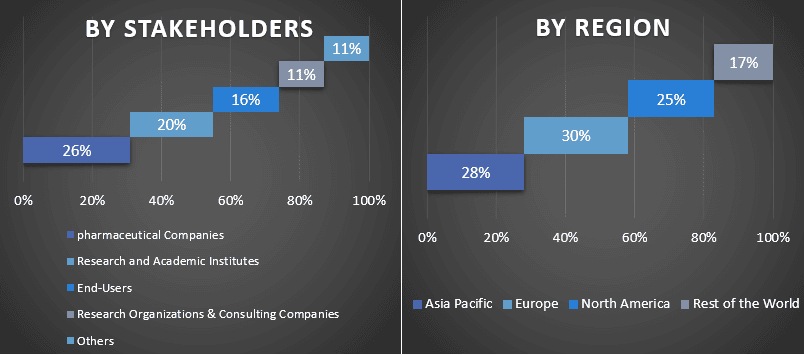
Market Engineering
The data triangulation technique was employed to complete the overall market estimation and to arrive at precise statistical numbers for each segment and sub-segment of the global neuroscience market. data was split into several segments & sub-segments post studying various parameters and trends in the areas of the product, technology, and end-users in the global neuroscience market.
The main objective of the Global Neuroscience Market Study
The current & future market trends of the global neuroscience market were pinpointed in the study. Investors can gain strategic insights to base their discretion for investments on the qualitative and quantitative analysis performed in the study. Current and future market trends determined the overall attractiveness of the market at a regional level, providing a platform for the industrial participant to exploit the untapped market to benefit from a first-mover advantage. Other quantitative goals of the studies include:
- Analyze the current and forecast market size of the neuroscience market in terms of value (USD). Also, analyze the current and forecast market size of different segments and sub-segments
- Segments in the study include areas of the product, technology, and end-users
- Define and analysis of the regulatory framework for the neuroscience industry
- Analyze the value chain involved with the presence of various intermediaries, along with analyzing customer and competitor behaviors of the industry
- Analyze the current and forecast market size of the neuroscience market for the major region
- Major countries of regions studied in the report include Asia Pacific, Europe, North America, and the Rest of the World
- Company profiles of the neuroscience market and the growth strategies adopted by the market players to sustain in the fast-growing market
- Deep dive regional level analysis of the industry
Related Reports
Customers who bought this item also bought

